International football may now be on a break till March next year, but there are still some interesting topics of conversation around national sides till we see them back in action again. With regard to England, one of their biggest talking points has been Gareth Southgate’s switch back to a three-man defence ahead of next year’s Euros. England have been primarily using a 3-4-3 in games since earlier this year, with Southgate’s reasoning being that the profile of players available to him makes this the best system for tournaments, along with the fact that England have looked defensively vulnerable when using a four-man backline.
However, this shift has led to a reduction in creativity and goalscoring chances for the Three Lions, so there is a need to find a balance between defensive solidity and attacking threat, if England are to persist with this system through to the Euros next year as well. This tactical analysis piece will attempt to find the issues that the 3-4-3 is creating for England offensively, and look for a solution to improve the supply to the English attackers.
The Statistical Case
England, of course, had used a back three during the 2018 World Cup, reaching the semi-finals where they lost in extra-time to Croatia. Southgate had begun to use the system in the lead-up to the tournament during the preparation friendlies which were played before the main event, so we will include those games as part of our analysis as well. Including two games after the World Cup, England played 13 games in a 3-5-2, scoring 20 goals (1.54 goals/game) and conceding 10 (0.77/game).
The xG value per game, on average, during this run, was 1.34, while England’s xGA on average was 0.97. This shows how while England were able to generally restrict scoring opportunities for their opponents, they struggled to create opportunities for themselves as well. Immediately after the September internationals in 2018, Southgate switched to a back four, playing a 4-3-3 or 4-2-3-1. During this run of games, which lasted until September of this year, England played 15 games, scoring 47 goals (3.13/game) and conceding 12 (0.8/game), while the xG values on average were an xG of 1.94 and an xGA of 0.86. On average, England did score more and concede fewer goals during this spell, but it also included games where the Three Lions conceded three (against Kosovo) and twice (against Spain).
In general, Southgate believed that this style was more open and would lead to more chances being given up against quality sides, which is why the England manager opted to go to a back three once again, starting from the UEFA Nations League game against Denmark in September this year. England have thus played 7 games in a back three this year, scoring 12 goals (1.71/game) and conceding four (0.57/game), at an average xG of 1.94 and an xGA of 0.78. It is thus clear how England have generally conceded fewer goals when playing in a back three, and while this current run of games has seen them create goals at the same rate (in terms of xG) as during the spell with the back four, there have been quite a few struggles as well, most notably in the games against Denmark and Belgium. England are in a group with Croatia, Scotland and the Czech Republic at the Euros next year, while they could face Germany, Portugal or France in the round of 16 if they finish top of their group.
Thus, while defensive solidity is important, Southgate will need his team to create and score goals as well, and so we will now have a tactical analysis of England over the last few games to pinpoint their issues creatively.
Lack of wide support
Playing a 3-4-3 means that the wide attackers in the system will often need to come inside and play centrally to support the lone striker. When this happens, the wing-backs need to push up and provide width, as well as runs in behind to stretch the backline, especially if the two wide attackers are coming short and not going in behind the defence. With England, this sort of movement and cohesion has only been seen sporadically over the last few games. Of course, it also depends on the type of player used in the wider attacking roles.
In Marcus Rashford, Raheem Sterling and Jadon Sancho, England have three players who can attack defences at pace, with the ability to beat defenders one-on-one and bear down on goal. All three are adept at making runs in behind, which dovetails well with Harry Kane’s increasing tendency to drop deep, creating space for those wide attackers to run into. On the other hand, if the likes of Jack Grealish and Mason Mount are played there, they will usually come short and try to combine with Kane, rather than sprinting in behind to get onto the end of his passes.
This is arguably easier to defend against since the opposing defence can push up, safe in the knowledge that they are less likely to be caught out by a run behind them. The wing-backs have also not been as adventurous as hoped, which again means that the play is often in front of the opposition defence, rather than behind it.
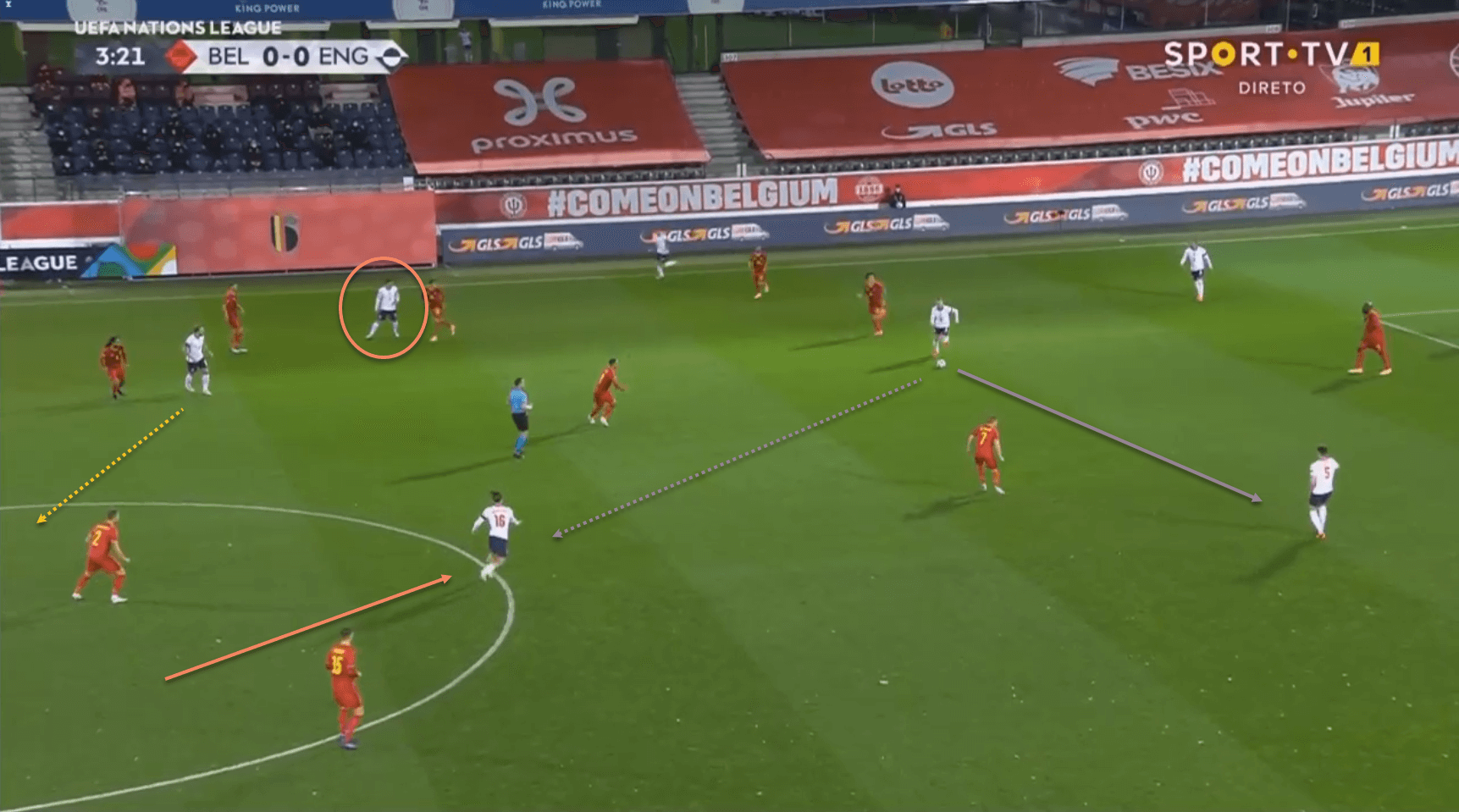
Here, Grealish is coming short to link up with the midfield. However, Mount and Kane both hold their position rather than attempting to make a run in behind to take advantage of the space that the Aston Villa skipper has vacated. Another issue is the fact that Jordan Henderson, on the ball, chooses to make the safe pass to Declan Rice rather than find Grealish, even though he is in considerable space, and has the ability to turn away from opposition defenders closing him down from behind.
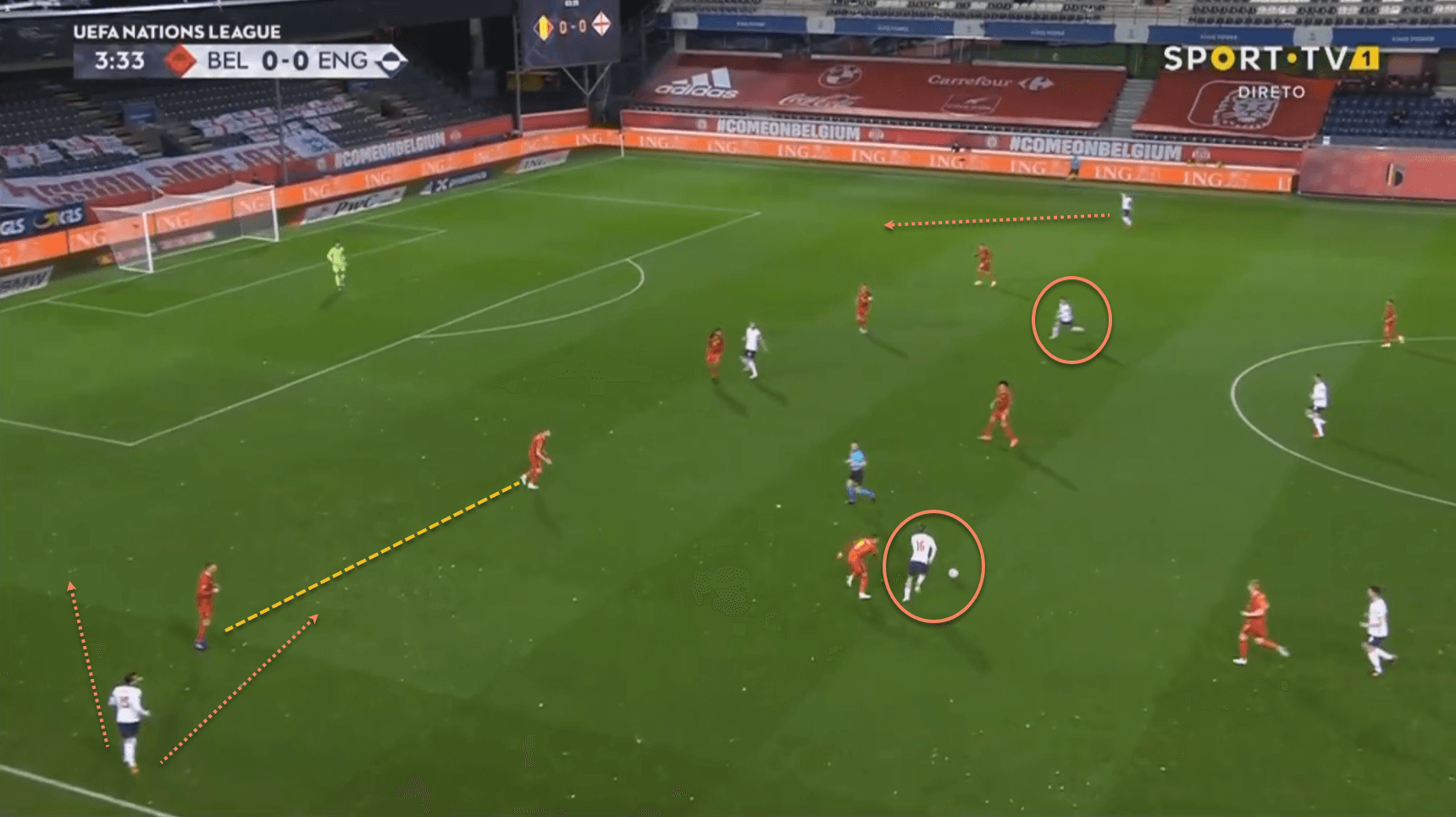
As the move developed, Grealish did get on the ball, but again chose to come inside. This is not a problem in itself, but as can be seen, Mount is also fairly narrow, which means that the wing-backs (Chilwell and Trippier in this case) will need to provide width. However, there is significant space between the Belgian centre-back and wing-back, which a direct attacker such as Rashford or Sterling could run into and take advantage of. Chilwell, being a left-footed wing-back, chooses to stay on the outside of the wing-back, which means that the space is left unutilised.
This is the key issue with the 3-4-3 – a lack of attacking support from wider areas. Playing this system essentially takes away an attacker for a defender, which means that even when there are situations like the above where there is space to make runs in behind, the players are not in a position to take advantage. If you did not know that England were playing in that setup, looking at the image above may seem like a natural progression of an attack in a 4-3-3: Kane and the two wing-backs as the three-man forward line, Grealish, Mount, and Henderson as the three midfielders, and then the four defenders. In such a situation, it is reasonable to assume that the wide attackers would be making runs into the space between the Belgian centre-back and wing-back, rather than outside of them. Thus, playing in a 3-4-3 may put the players in positions where they are not ideally suited to be during certain phases of the game, at least from an attacking and creative sense.
Contrast this with the situation when England did make runs in behind –
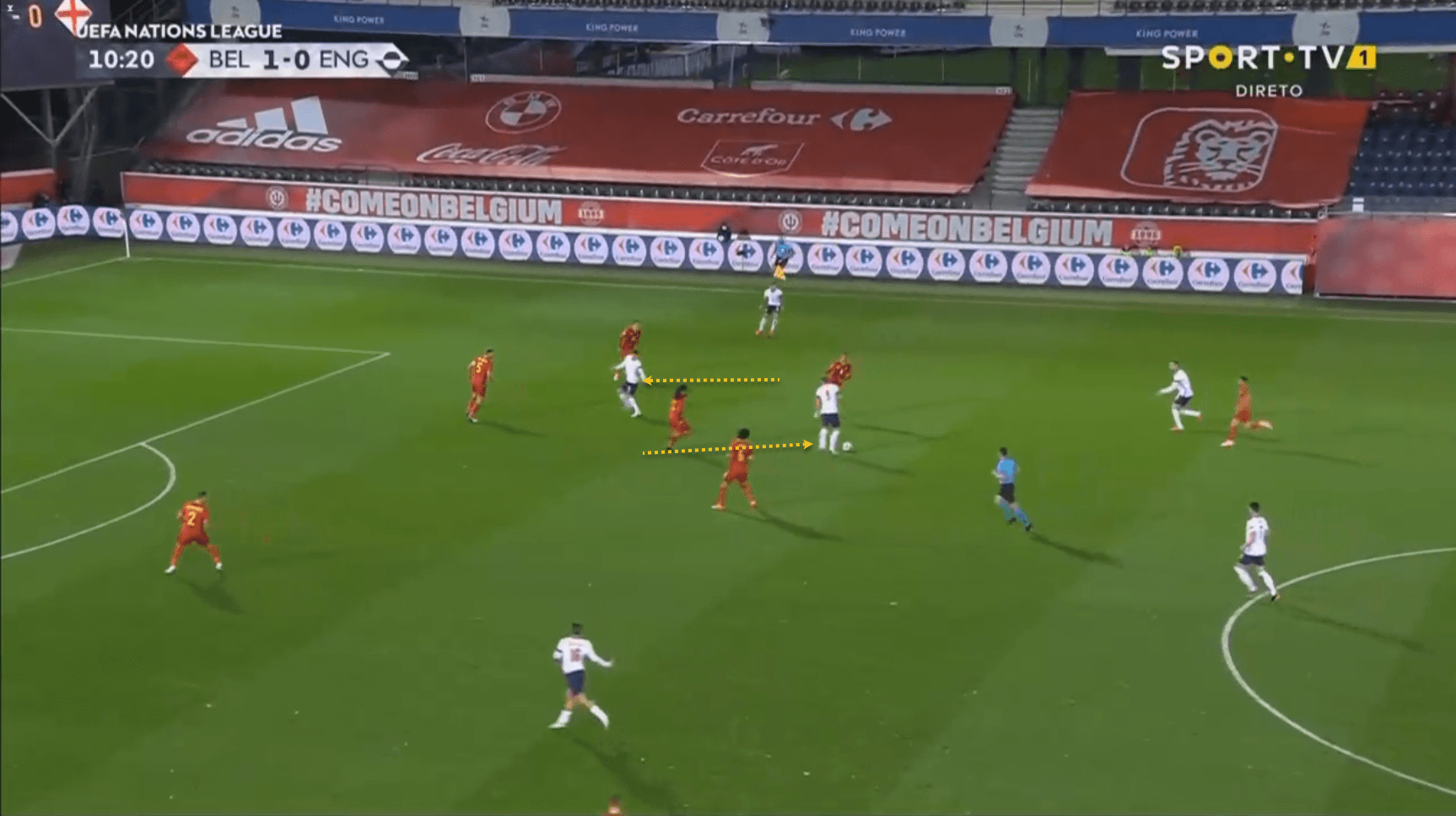
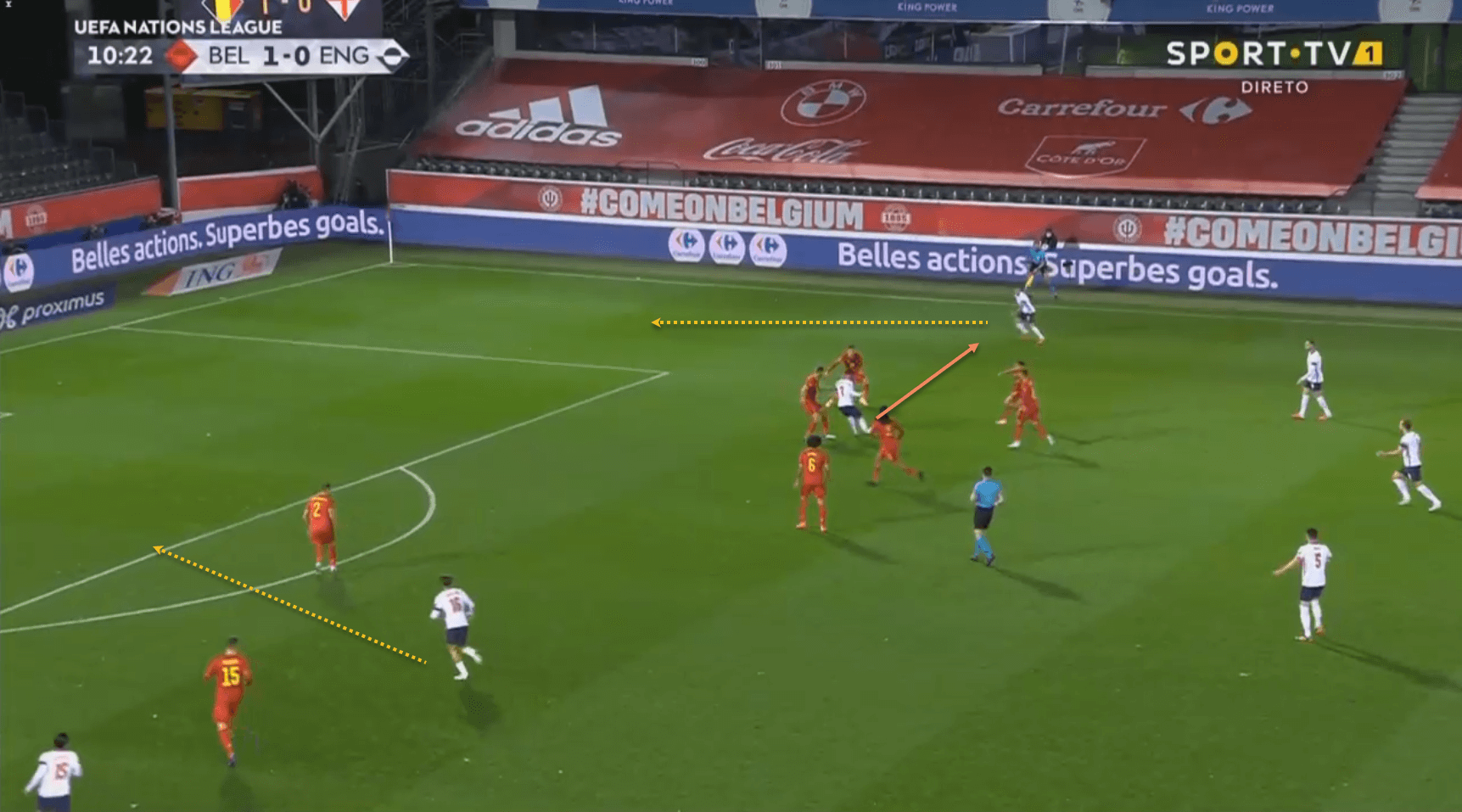
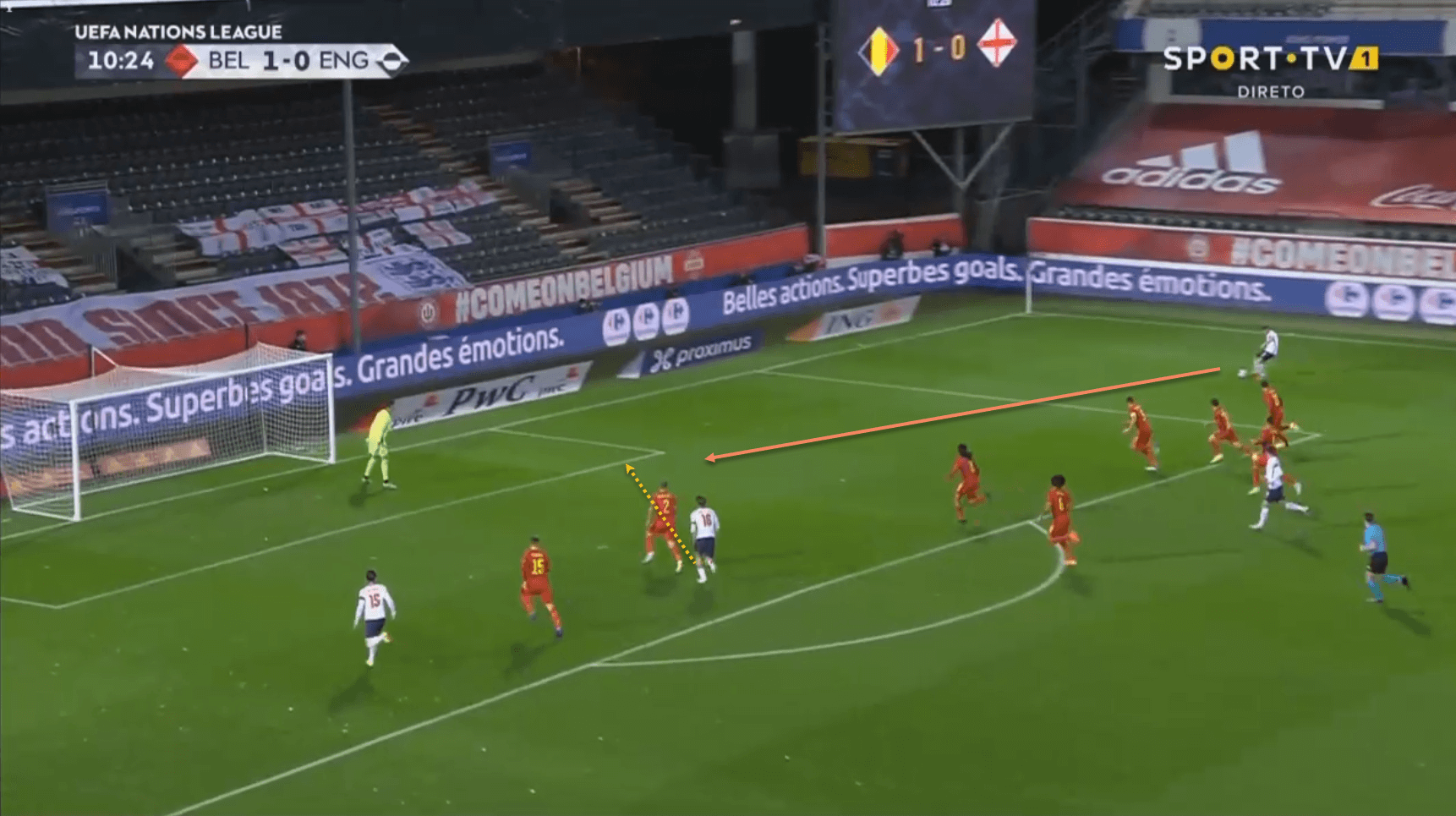
These three images show a quick attack by the Three Lions which led to a Grealish shot being deflected for a corner. Kane comes short to receive, but Mount immediately advances into the space vacated. The England skipper plays the ball to him, and the Chelsea man is also then able to attract the Belgium defenders before playing the ball out to Trippier, who is advancing beyond him. Notice just how many Belgian players have been attracted to Mount, opening space up for Trippier, as well as for Grealish, making a run into the box from the left.
Of course, this sort of movement is much more likely to take place in the final third than in England’s own half, but the point still remains that the 3-4-3 will require the wider attackers to come infield to support the striker, and therefore runs from the wing-backs are the only way to keep the width and stretch the opposition defence. However, this risks leaving the side numerically short if possession is lost and the opposition can counter-attack – a 4-3-3 can solve this, with one of the central midfielders advancing to combine with the striker, and the wide attackers holding width, with the full-backs staying deep, only advancing to create an overload when necessary.
Lack of creativity from the central midfielders
In looking to make the Three Lions more solid defensively, Southgate has often paired Rice and Henderson in midfield. This is understandable, as a two-man midfield will need to have energy and legs to be able to effectively cope with opposition midfields, which will usually have at least three players. However, once again it feels like a trick is being missed here. Rather than play the two of them in a duo, Southgate can simply bring Grealish into central midfield to form a trio.
This would automatically also create a spot for a wide attacker such as Rashford, Sterling or Sancho, while also retaining Grealish’s ball-carrying ability from deep. Henderson and Rice are not the most creative or forward-thinking passers, even if Henderson has done a fine job at Liverpool in facilitating their front three – it must be remembered that he plays a very different role for England, and has also played the majority of his football under Jürgen Klopp in a three-man midfield.
Kalvin Phillips was given a debut by Southgate recently, and the Leeds man does possess the best passing range of England’s central midfield options, so it remains to be seen if he can be an effective player in this setup. However, Rice and Henderson are largely conservative and safe with their passing, which inhibits the speed of England’s buildup.
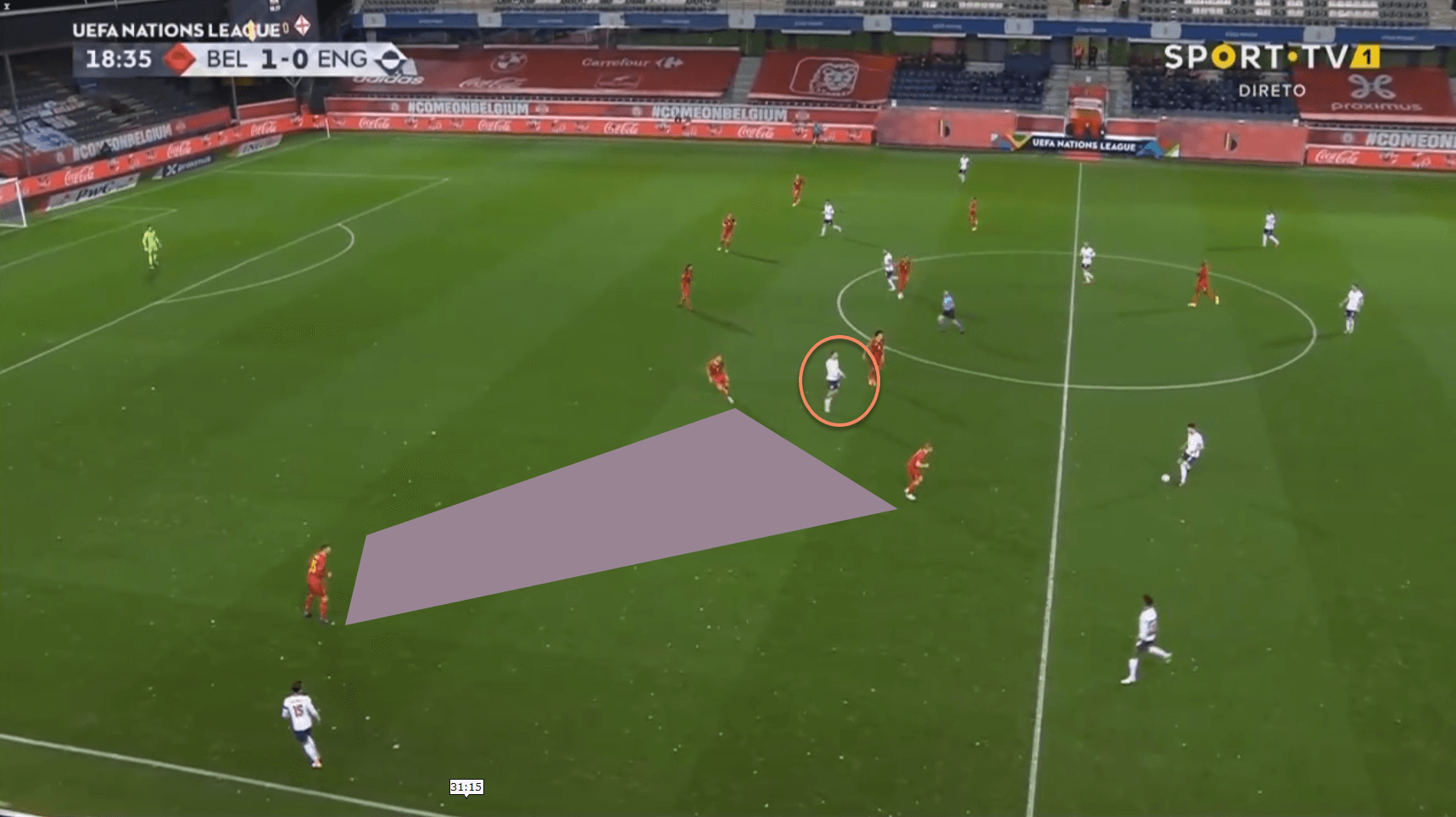
Once again, Grealish has drifted infield, leaving a huge amount of space between the Belgian defence and midfield, which no England player is taking advantage of. At the same time, Rice is looking to play the ball to Tyrone Mings, rather than passing it forward to Grealish.
It is interesting to see the difference Harry Winks made in this regard when he came on in this game –
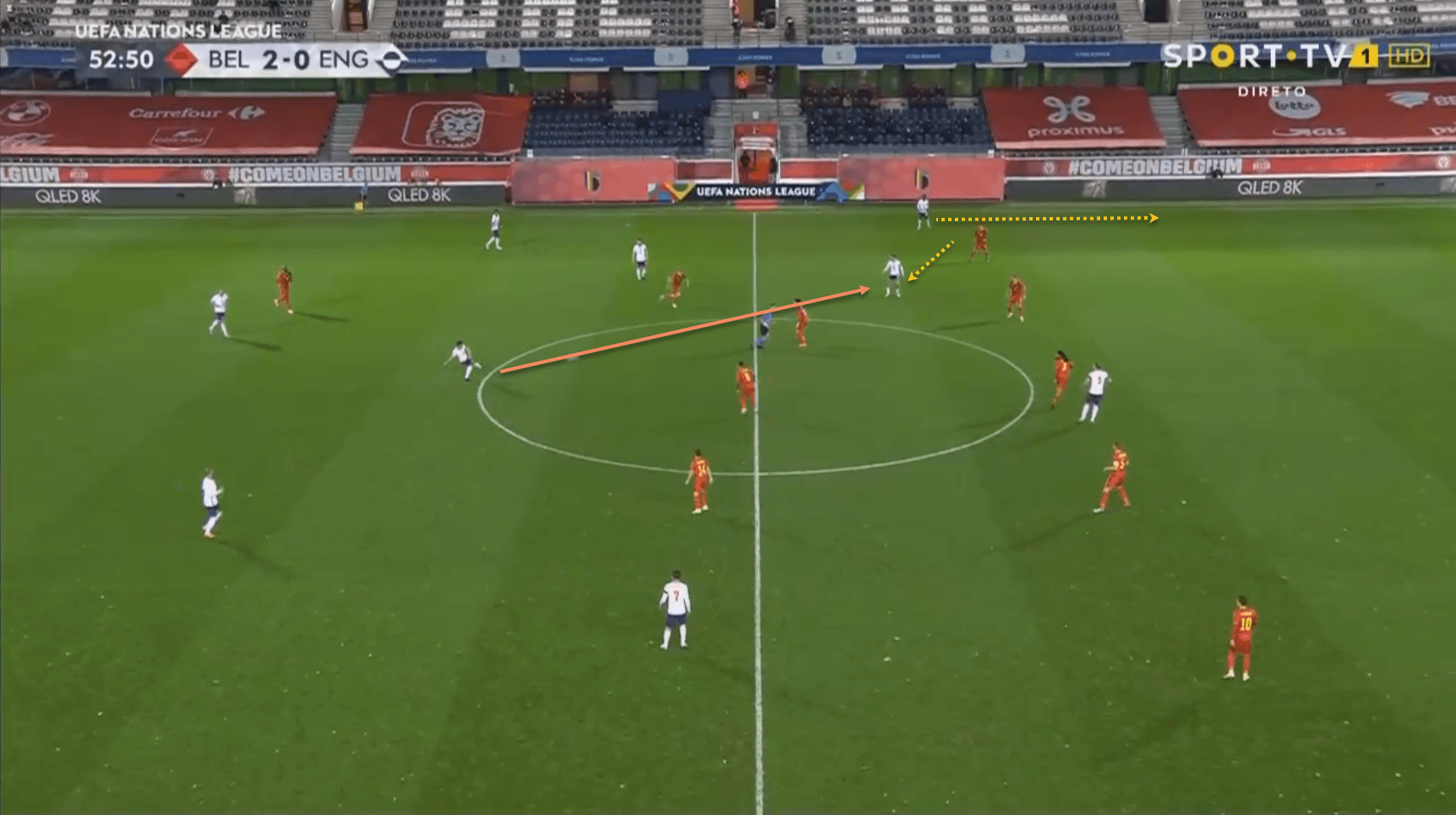
Grealish comes infield again into central areas, but this time, Winks is able to find him between the lines with an accurate pass which allows him to turn and attack the Belgian backline, eventually winning a free-kick on the edge of the area. It is also interesting to see how Bukayo Saka, who came on for Chilwell, is holding the width on the left, and looks to make a run in behind.
A 4-3-3 in possession, but with players out of position
Systems and formations are usually quite different on the pitch, based on whether the side is in possession or out of it, whether they are chasing the game or protecting a lead, and various other factors. It is therefore intriguing to see how England’s formation in possession changed during this game –
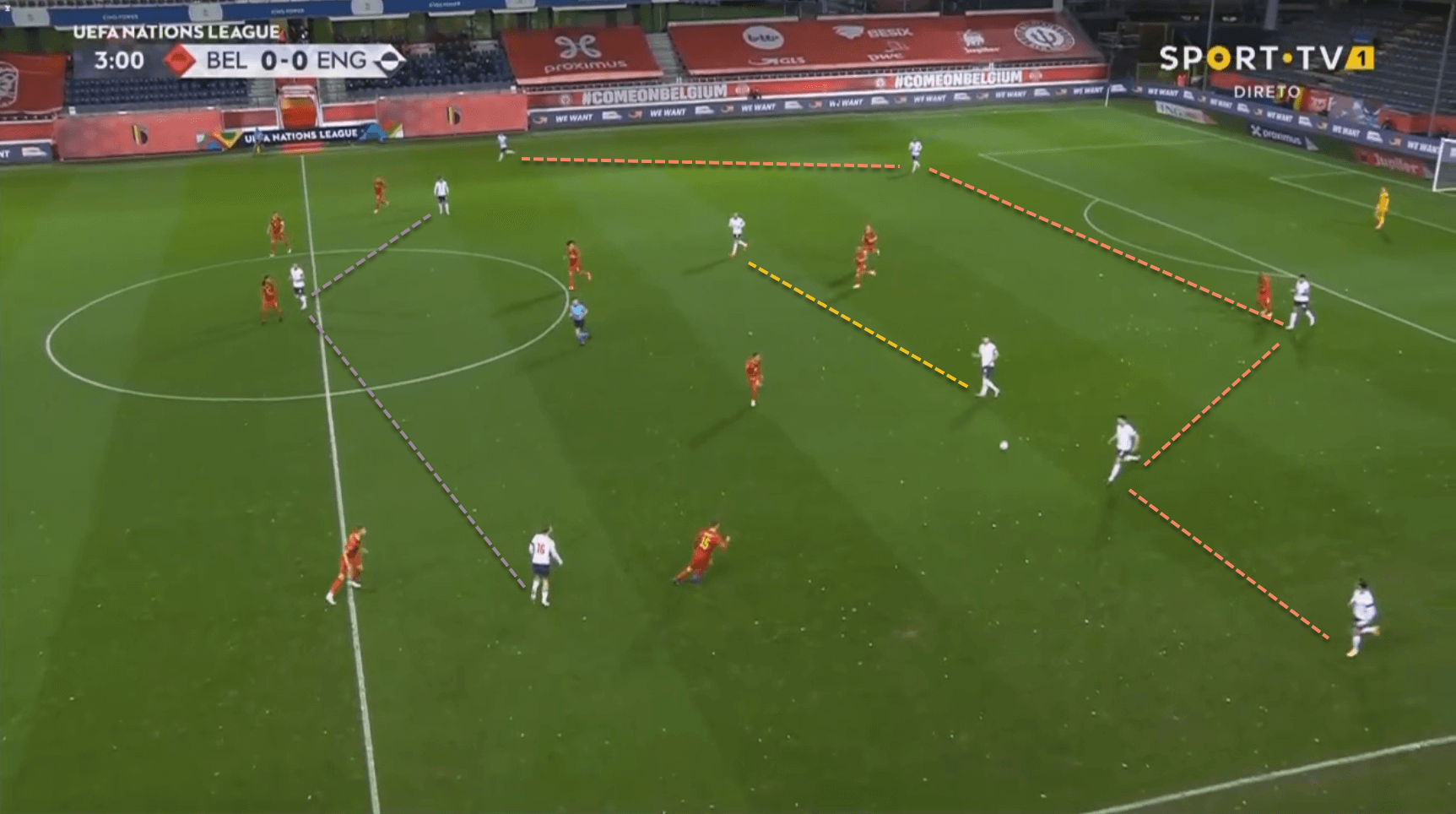
This is the shape in which England started the game – a 3-4-3 or a 5-2-3 in the defensive phase
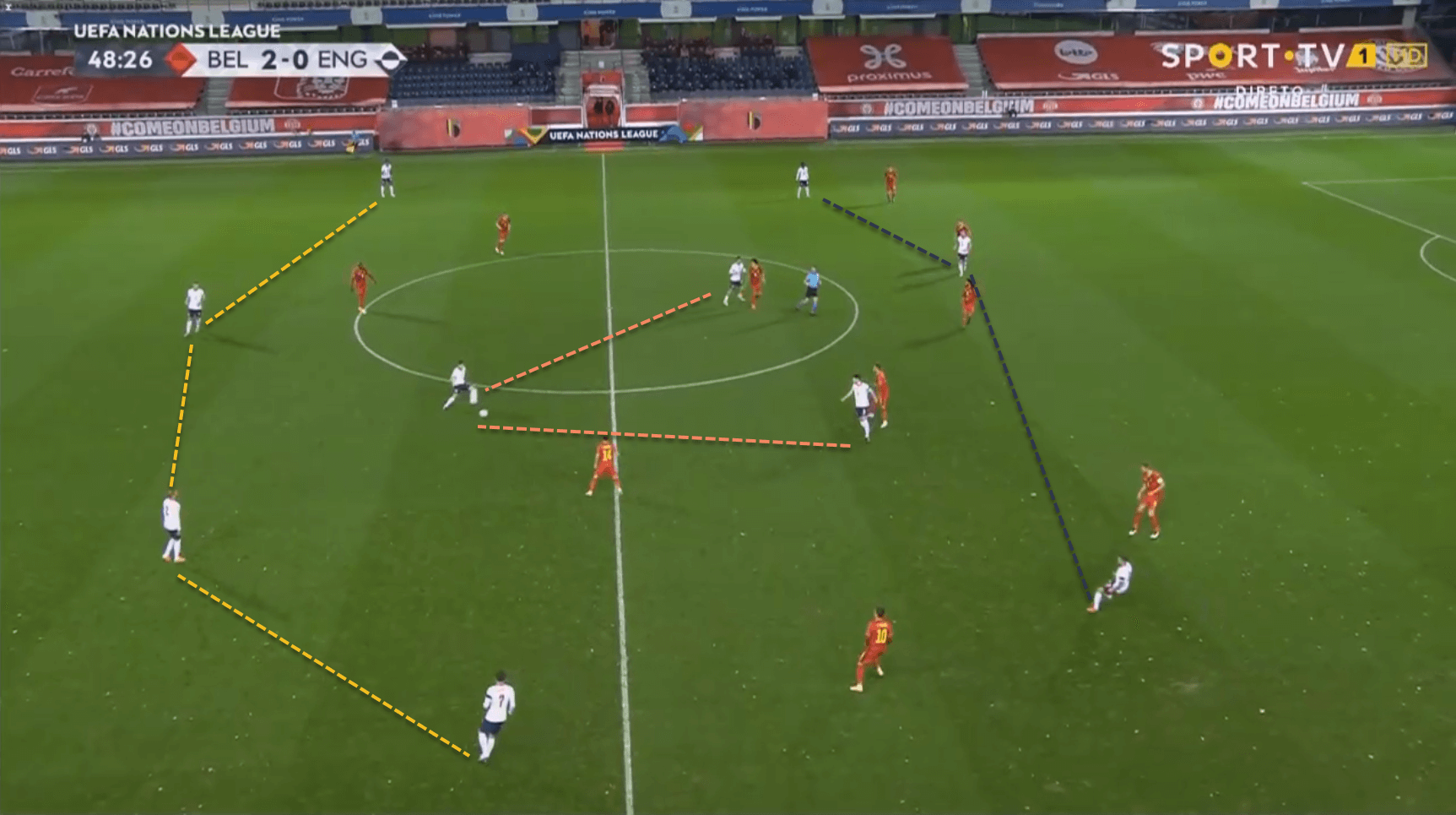
However, early in the second half, England are effectively playing a 4-3-3. Saka has pushed out high on the left to become a winger, as has Trippier on the near side, with Grealish taking up a central position ahead of Winks.
This sort of shape is arguably the most effective one for England, and it can be argued that it makes sense to play in this manner from the start. Doing so would allow Grealish to operate in his favoured central role, while the likes of Rashford, Sterling and Sancho would be very dangerous wide attackers, playing off Kane who would drop off and create the space to run in behind. In the above image, it is a slightly awkward fit, with Tyrone Mings in the left-back position, and Trippier and Saka as the wingers.
Conclusion
International football management is not as easy as it may seem – managers rarely have more than a few weeks with their sides every season, and so it is difficult to instil a progressive, intricate playing style without repetition in multiple training sessions. Therefore, there is an argument that the most effective way to manage an international team is to put them in a system that maximizes the individual ability of the available players, and is also familiar to them.
Most of England’s squad members routinely play in a 4-3-3 or 4-2-3-1 at their clubs, bar a few exceptions, while, at the moment, England are also playing an extra defender at the expense of an attacker. With Grealish now looking like a key part of the team, it makes sense to play him in a central role, from where he can be most dangerous, while also then being able to bring in an additional attacker.
A forward line of Kane, Rashford and Sterling, with Grealish as the attacking midfielder, would be a fearsome proposition for even the best international defences, while the likes of Henderson, Rice and Phillips can be relied upon to stay solid in midfield, and Southgate can then instruct his full-backs to be more conservative and ensure that they are not caught out on the counter-attack. Doing so would allow England to create the chances that they would need to go deep into a tournament like the upcoming Euros, while maintaining the defensive balance needed as well.

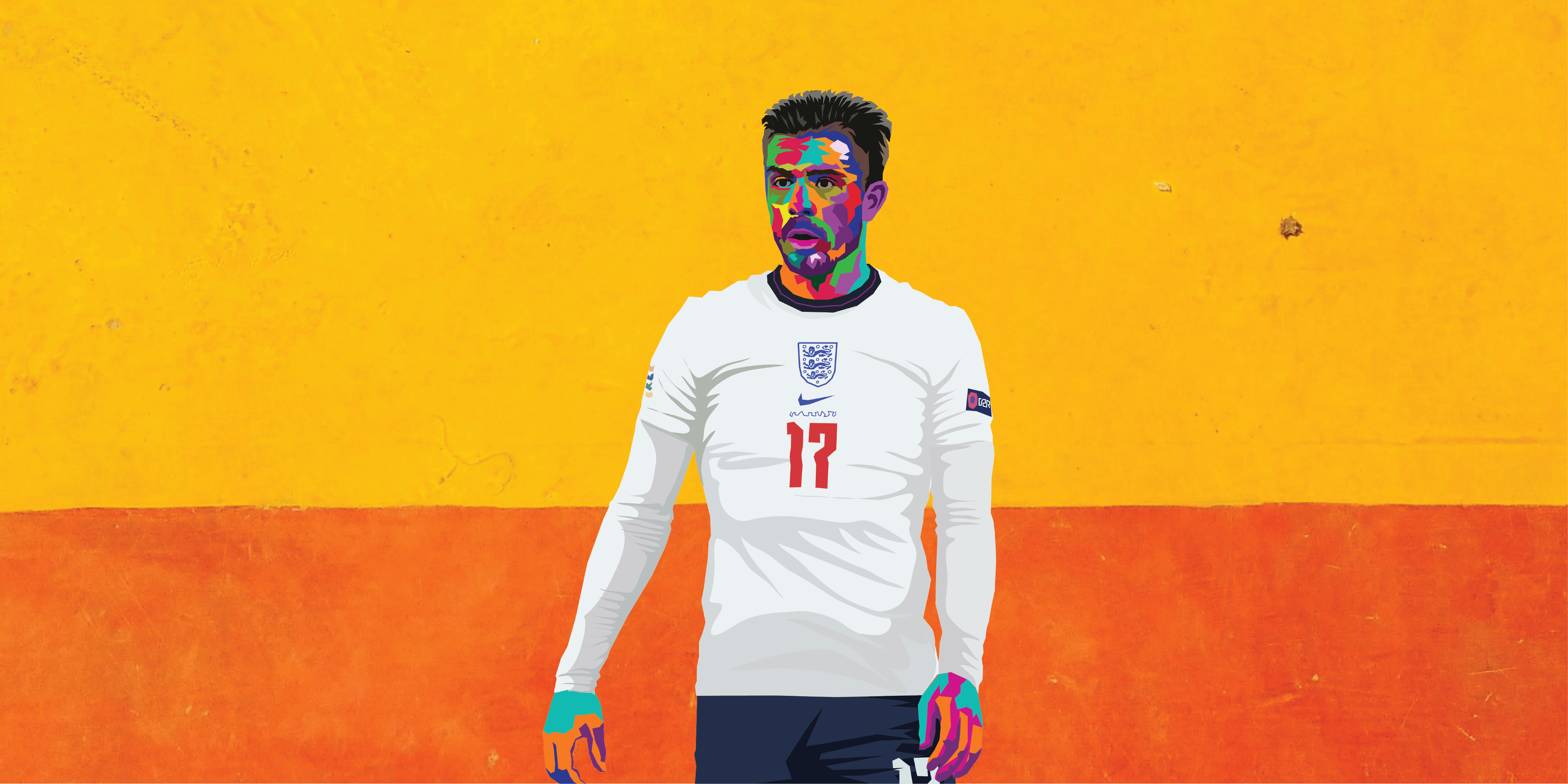



Comments